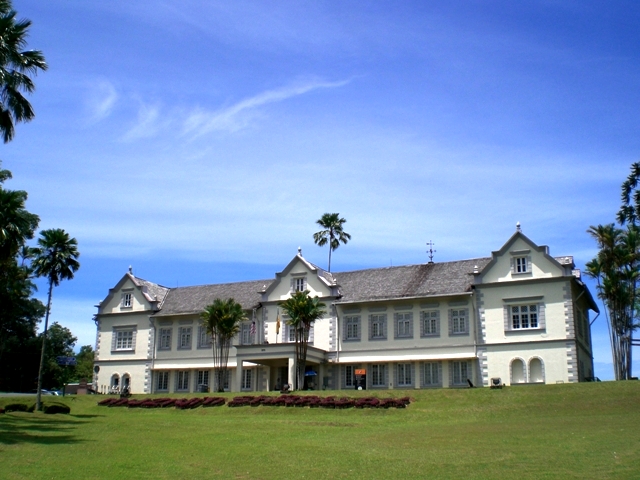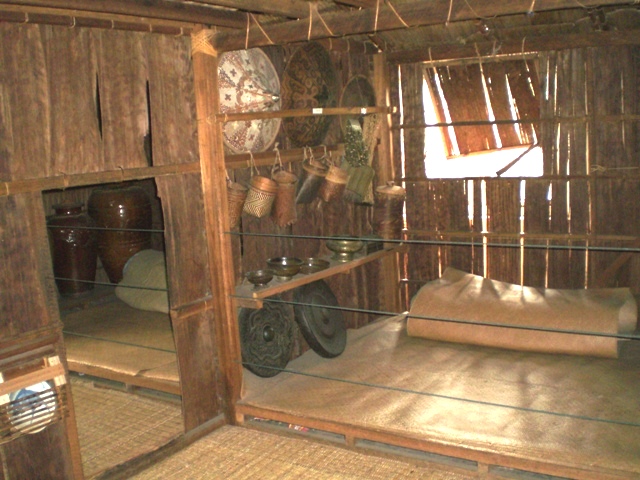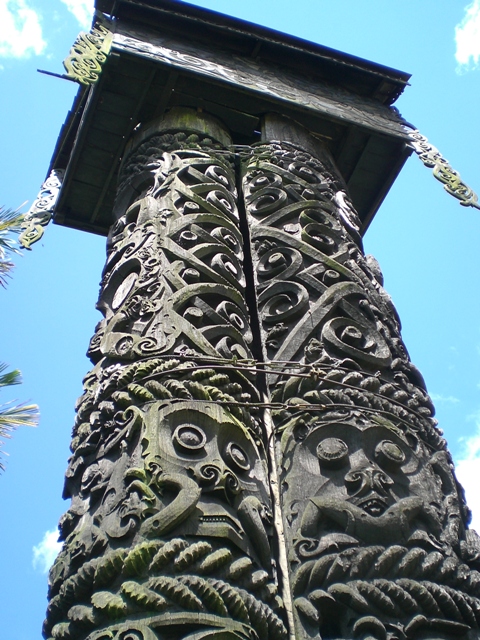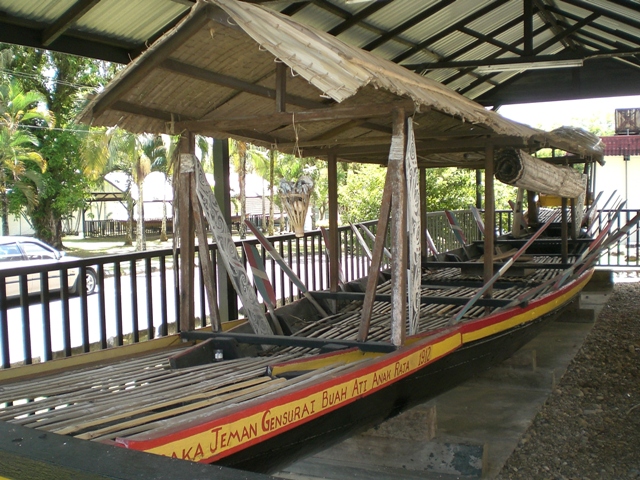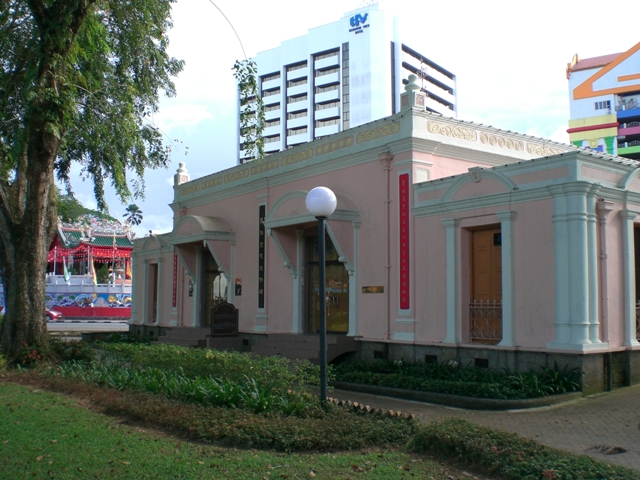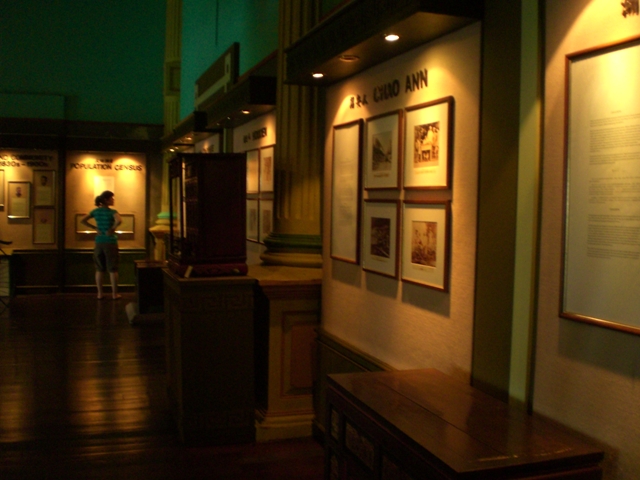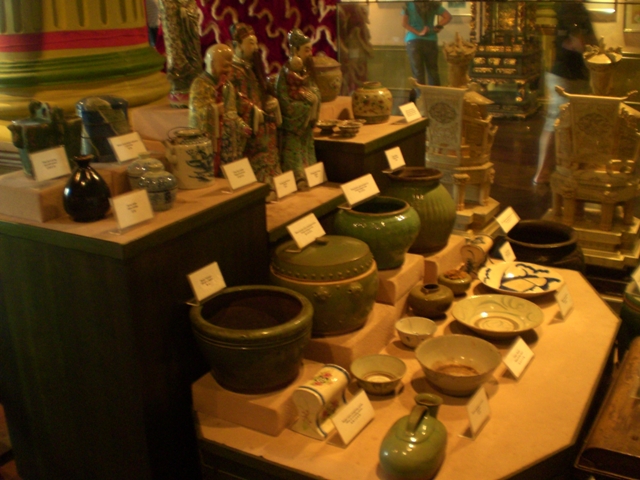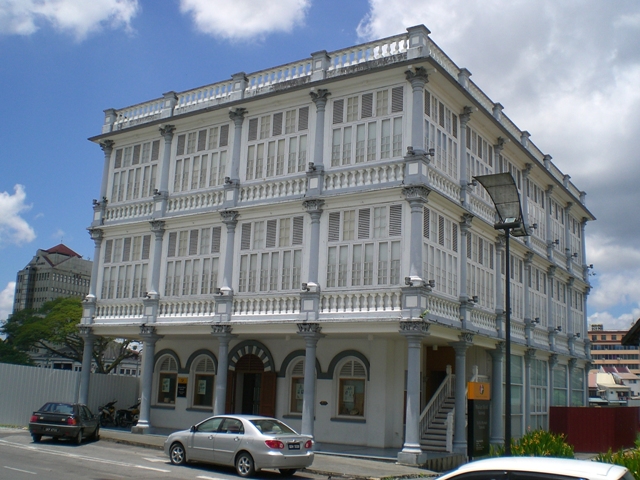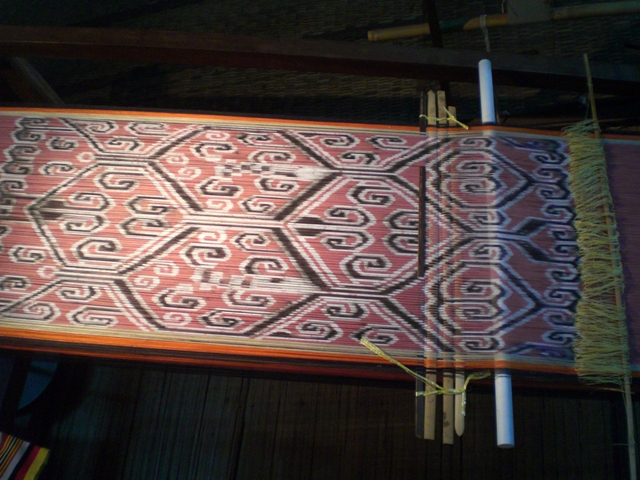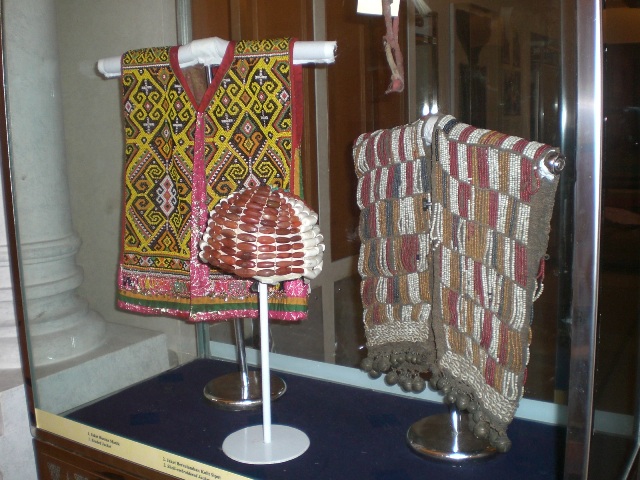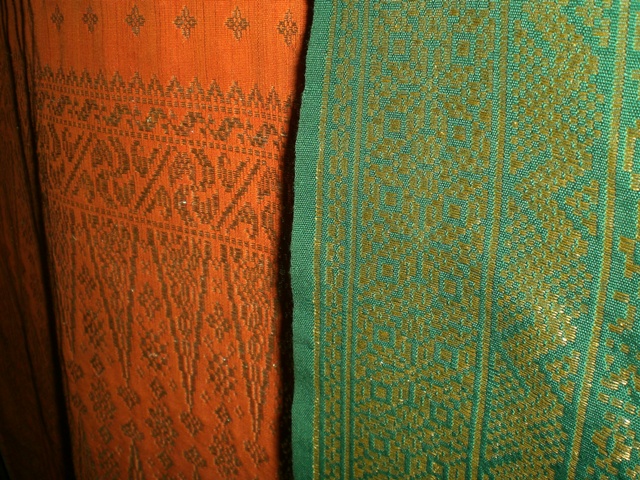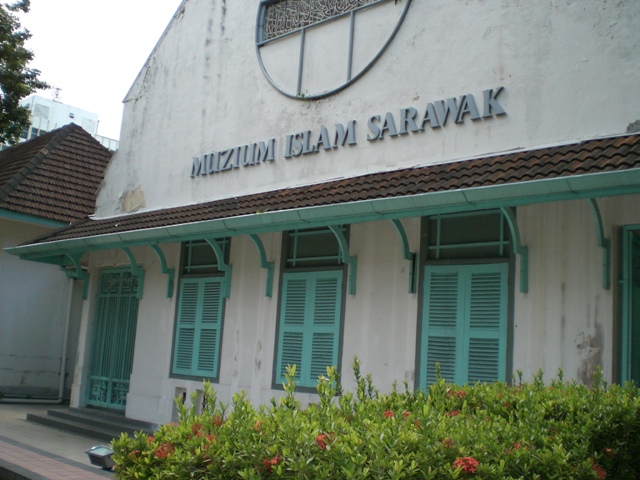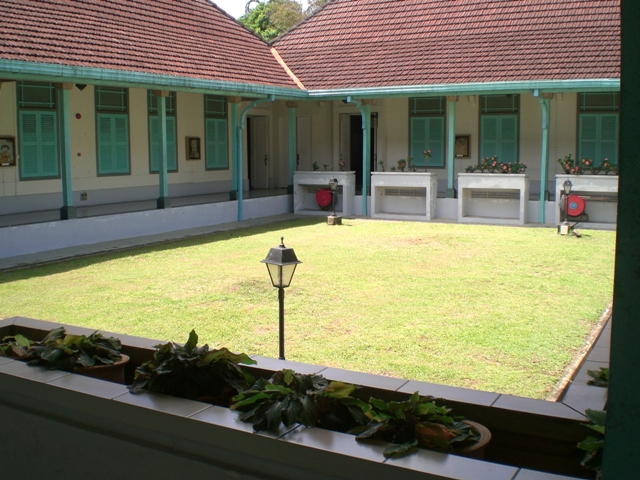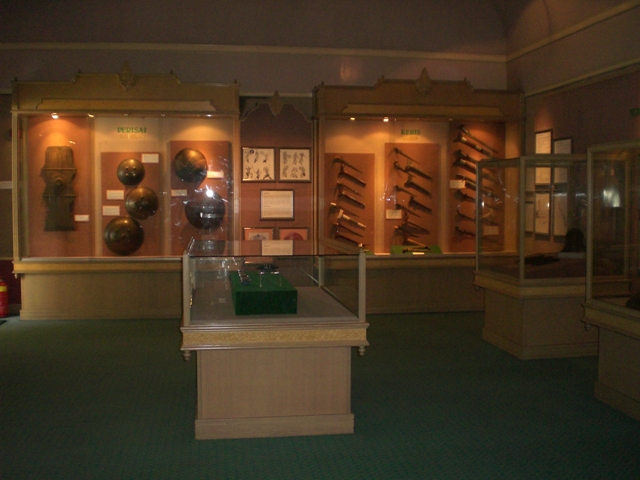The Sarawak Museum
Often touted as one of the finest of its kind in South East Asia, this museum was built in 1891 by the second White Rajah, Charles Brooke, who commissioned the building along the style of a Normandy town house of that period. Allegedly the famed naturalist Alfred Russel Wallace, who himself had a brief sojourn in the jungle of Sarawak, had a say on the contents of the displays in this museum.
This is a natural history museum and thus displays are mostly of flora and fauna and native handicraft of Sarawak. In fact the main entrance of the museum displays its signage as “Ethnology Museum” prominently.
The museum had since 1982 added a new and bigger wing, Dewan Tun Abdul Razak, across the road and accessible by an overhead bridge, where records and artifacts of historical events of Sarawak are displayed. Notable are a life-size replica of the interior of an Iban longhouse, complete with kitchen’s fireplace, sleeping rooms, and hanging from the rafter, real human skulls from the headhunting days of the tribe.
Then there is the actual iron cannon employed by the White Rajah to quell the rebellion of various native tribes living in the interior of his domain, most famous of which was the legendary Iban chief – Rentap.
Outside on the museum ground is an impressive Iban warboat dating back to 1912 that could sit twenty five warriors. It has an impressive description of one of its exploits, a punitive exhibition in 1915 up the upper Mujong River to put down tribal rebellion, complete with the names of the some of the warriors. Nearby a old massive totem pole, the kelirieng, belonging to a native chieftain served as the traditional burial post for his daughter stands proudly as a legacy of the Kenyah, one of a score of native tribes of Sarawak.
Chinese History Museum
This is a single story square building on the Kuching Waterfront facing the Main Bazaar and the Tua Pek Kong Chinese temple. Originally built as a court by the Brooke regime to handle the affairs of the local Chinese, ranging from marriage, inheritance and other minor disputes, as the white ruler did not want to involve in the disputes of the local Chinese. The court was headed by a prominent community leader, Ong Tiang Swee and assisted by 6 other judges from the different Chinese clans of Sarawak. The building was in turn the premises of the Chinese Chamber of Commerce until 1993 when it was turned into the present Chinese History Museum.
In it are displayed write-ups and artifacts relating to the various Chinese clans’ history in Sarawak. According to this museum there are about 10 distinct Chinese dialectical groups in Sarawak, namely the Foochow, Hakka, Hokkien, Teochew, Henghua, Cantonese, Hainanese, Chao An, Kwongsai and the very few Northen Chinese collectively comprise of the Shanghainese, Shantung and others.
Each of the Chinese dialect group has a comprehensive write-up on the history of their migration from China to Sarawak and the different circumstances under which the migration took place, what trade and livelihood they engaged in and their headmen and leaders. For example the many Hakkas who were previously settled in Dutch Kalimantan just across the border, migrated into Bau area during the gold rush days of the 1800s. While the Foochows only came in waves of large numbers at the turn of the 20th century to the Rejang River basin.
Many artifacts like the kopitiam (traditional Chinese coffee shop) marble table and wooden chairs, rickshaw, kitchen utensils, musical instruments, religous altars are displayed. Also displayed are rare photos taken during the reign of the White Rajah and British colonial times.
The Textile Museum
This museum is housed in the Pavilion, a beautifully restored building originally built in 1907. Sarawak’s natives have a rich tradition in producing exquisite fabric such as the pua kumbu, kain songket and the batik. The former, mostly weaved by the Iban, involves the use of wooden weaving looms of which many are displayed here. The designs on the fabric are uniquely tribal and are truly works of art. Manniquins of the weavers sit at the looms give the visitors the feel of a living tradition at work. Pua kumbu making is intricate and time consuming and is thus a labour of love, which explains its high price. Many of this beautiful fabric are on sale in the souvenir shops along Main Bazaar.
The kain songket is another exquisitely designed fabric perfected over the years by the Malays. It is a time-consuming process of weaving gold-coloured threads into intricate designs and because of its high price and exclusiveness, it uses are mostly confined to ceremonial costumes for special occasions like wedding, Hari Raya and other big occasions. There is an interesting collection of this beautiful fabric on show here
Batik is the more mainstream fashion fabric among the Malaysian and can be designed for sarong, scarves, head veils, shawls and shirt and blouses. It has developed into an art form over the years and there are many fabric artists specializing in this field. A wide range of this fabric can be seen in the display here.
Visitors can view all these fabric in their splendour here in the museum.
Sarawak Islamic Museum
Located in Jalan P. Ramlee, and just behind the Dewan Tun Razak, a new wing of the Sarawak Museum, this museum occupies a former maderasah, or Islamic religious school which nurtured many of Kuching’s intellectuals in the Brooke era. The single-story building itself is elegant with the centre court garden providing a calming sanctuary. The exhibits are divided into seven sections and among the many classrooms.
The design of the building is a series of rectangular classroom with corridor running the length and is built surrounding two garden courtyard. The display of the artifacts in this museum is organized in 7 categories namely:-
History of Islam in Sarawak
Islamic Architecture
Science, Technology, Economics, Education and Literature
Music Costumes and Personal Ornaments
Weaponry
Decorative Arts and Domestic Utensils
The Holy Quran Collection
